Alternative to X86, Asterfusion ARM SOC Open Computing platform Solution
written by Asterfuison
Challenges faced by cloud networks
With the rapid development of cloud and virtualization technologies in data centers, the forwarding performance of Open vSwitch (OVS) and various virtualization network functions ((vFW/vLB/vNAT) implemented on X86 already cannot guarantee forwarding performance and consume a lot of computing resources. Although DPDK can realized application’s acceleration, there are still bottlenecks of performance and occupation of computing resources.
In this case, if the network function can be stripped from computing (server) processing “In-Network Computing”, it can ensure the requirements of high throughput, low latency, and low power consumption .
Asterfusion provides a series of “in-network computing” ARM SOC based open computing hardware platform that enables network hardware to adapt to the evolution and changes in the software application ecosystem.
What is an ARM SoC?
Arm-based equipment designed to contain processors and may even have adjustments to its architecture and functionality. Therefore, instead of a “central processing unit” (CPU), an Arm processor is called a system-on-chip (SoC).
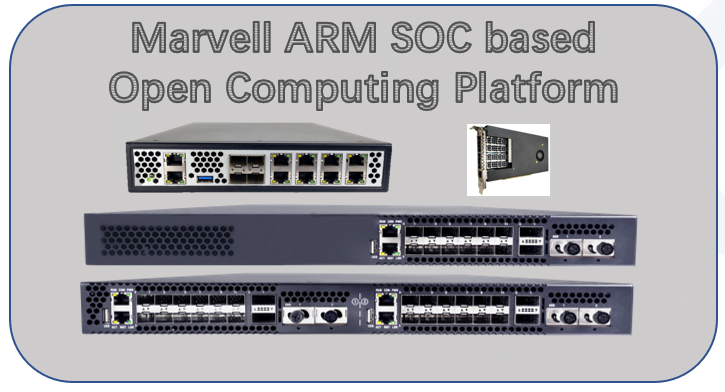
Asterfusion ARM SOC based Open Computing Platform
Asterfusion’s series of open computing hardware platforms include Helium SmartNIC, ET1600 and ET3000A series ARM64 network appliance.
The ET1600, Helium SmartNIC and ET3000A are both based on the SoC architecture. The core of the SoC chip is 4 / 24 64-bit ARM core processors, providing powerful general computing power for advanced data processing. At the same time, the SoC chip integrates hardware acceleration units such as security coprocessor, compression and decompression coprocessor, and virtualization unit, etc.
1.Marvell Octeon TX CN96XX chip based SmartNIC :
Asterfusion Helium SmartNIC equipped with Marvell Octeon CN96XX chip which has 2 models. One provides PCIe x16 Gen4.0 lane 4*25G interface and the other provides 2*100G interface. It can deploy in many scenarios like network, security and storage acceleration offload, which enables users to build high-performance intelligent programmable networks while preserving valuable computing resources in servers.
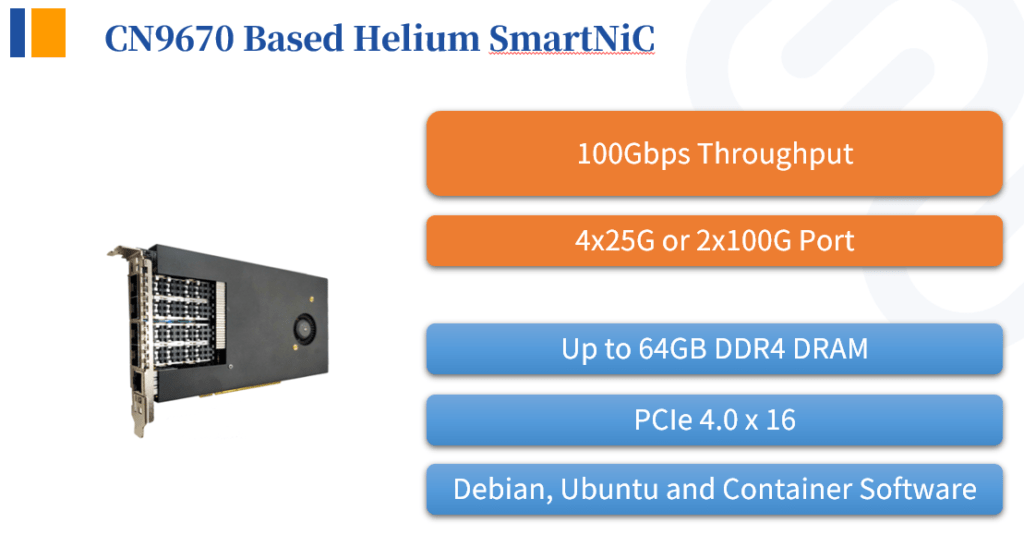
2.Marvell Octeon TX SOC based ARM64 network appliance
- Based on the Marvell OCTEON TX CN9132 SoC, ET1600 4-core ARM64 network appliance can be used as a low cost &power consumption Marvell arm server, also offers security and visibility features like hardware firewall, VPN, Probe and networking features for applications such as IoT/Fog gateways, Edge gateways and much more.

- Based on Marvell octeon cn96xx chip, Asterfusion ET3000A ARM64 network appliance can be deployed into a variety of network scenarios, such as edge computing, NFV offload, network security device such as security gateways, network monitoring; Layer 3/edge Routers and switches, Software Defined Networks (SDN), Network Function Virtualization (NFV), Artificial Intelligence (AI), SSL/IPsec offload processing, LTE/ IoT/Fog / edge gateways, SD-WAN, 5G UPF application, intrusion protection system (IPS).


X86 to ARM
In the cloud network environment, the general application functions are developed based on x86 platform. So, can applications developed on the X86 platform be successfully migrated to Asterfusion’s SoC (ARM processor) based open computing hardware platform? The answer is Yes!

How to Be Migrating Software from x86 to ARM Architecture?
Generally, the developed application software needs to be compiled by the compiled software and run on the operating system. The software originally developed for x86 platform needs to be compiled by ARM compiler software, and then run-on ARM platform operating system.
- For applications written in compiled languages, such as C/C++ or Go, needs to use the ARM64 GCC compiler to re-compile, as long as having source code.
- Applications written in interpreted languages such as Java and Python can run as long as the running environment is OK since these languages support cross-platform. Another premise is that the original application does not rely on the common components (shared object file or executable file) generated by C or C++ language compilation during operation.

FusionNOS-Framework Empowers Open Computing Platform
As mentioned above, compiled application software should run on the operating system of ARM platform. In order to facilitate customers to use Asterfusion series arm based open computing hardware we also provide a standard underlying foundation operating system—FusionNOS-Framework.
Network developers can use FusionNOS-Framework as the foundation to develop their own upper-layer applications, thus reducing the development cost and shorten the time to market.I f there is already existing applications on x86, it can be quickly deployed through simple compilations.
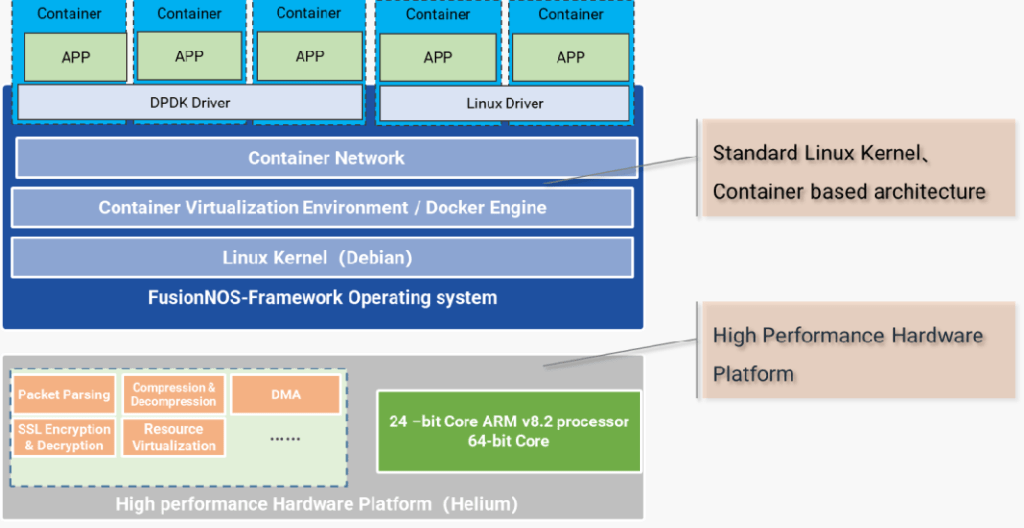
Mavell octeon ARM SOC Based Open Computing Platform Use Case
- The helium SmartNIC loads the fusionnos-framework operating system, which can offload OVS and its container-based environment enables loading a variety of virtual network functions and monitoring and analysis functions, such as IPS, SSL, DPI, etc.
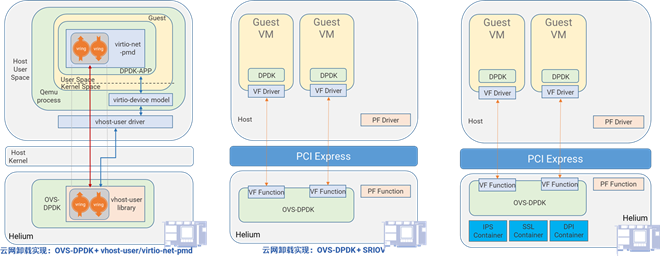
- The following picture shows an application case in which a cloud network customer offloads virtual network functions of the VPC edge gateway based on ET3000A. Before the transformation, the edge gateway functions are implemented by using general server software and SmartNIC. After the transformation, ET3000A implements all edge gateway functions. The bottom layer loads the FusionNos-Framework operating system, and the top layer loads various virtual network functions, which has incomparable advantages in cost, performance, stability, power consumption and much more.
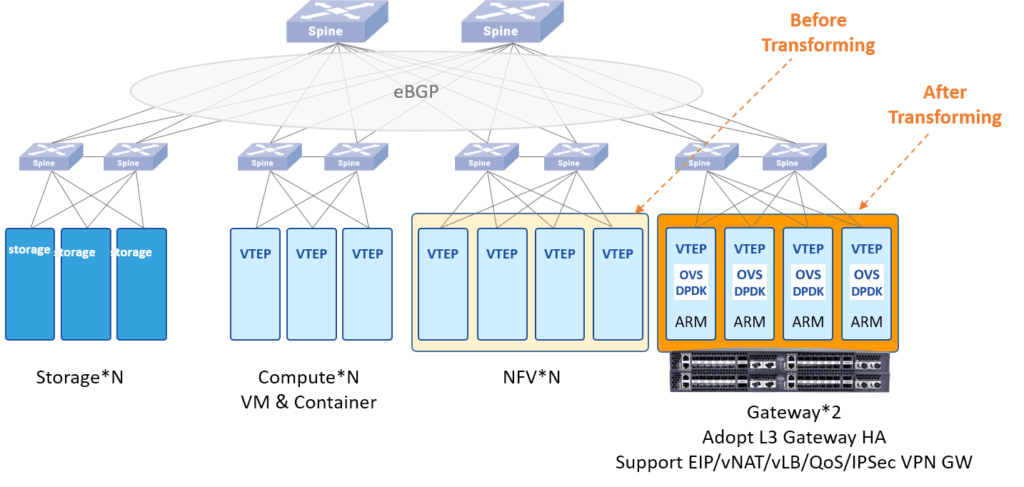
With the development of 5G, Marvell OCTEON ARM64 based network devices is helping more enterprises realize their potential-from edge devices to the network through computing infrastructure. Overall, it can provide processing power equivalent to X86 servers, but with lower cost, power consumption and footprint.



